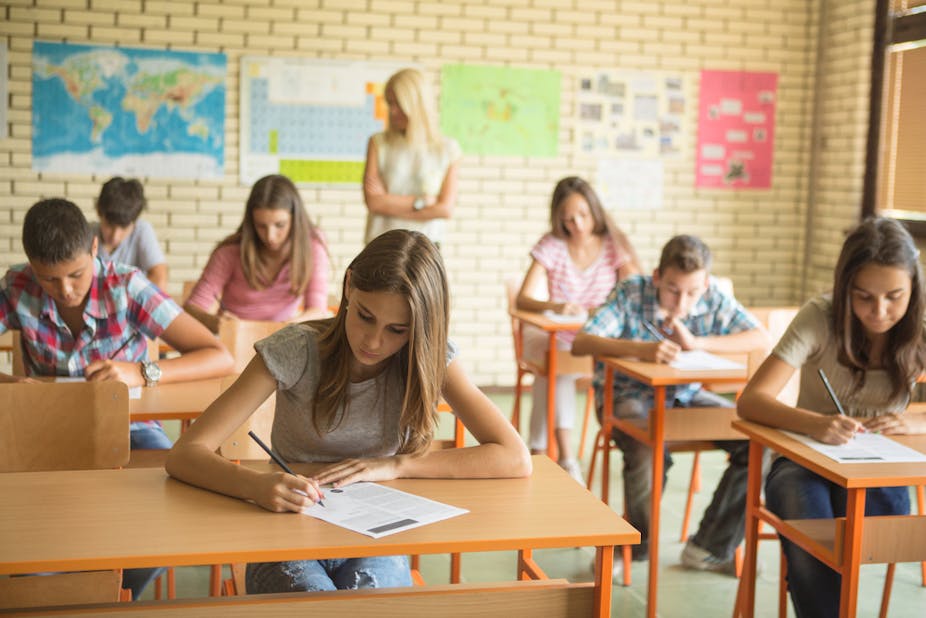Federal education minister Christopher Pyne has announced a scheme to make Australian schools “more autonomous”. Amid the fanfare of the announcement there was little detail except the hope that by 2017 “1500 more public schools” would be “independent”.
What was lacking was an explanation of what this will actually mean for these schools. And despite Pyne’s claim that this scheme is supported by “all the international and domestic research into autonomy”, this is just not the case.
What does ‘school autonomy’ mean?
School autonomy is what former Labor Party speechwriter Don Watson would call a “weasel word” — something that sounds specific but is actually quite vague.
It would appear the use of the term often has to do with audience. School autonomy is a concept that means different things to different people, depending on who you’re talking to, and what they stand to benefit.
For school principals it appears to mean being cut loose from central office bureaucrats, giving principals control over the flexible use of global budgets and the destiny of their own school.
For parents it appears to mean making schools more accountable to parents by giving them a greater say over how resources are used, making parents more engaged with the school.
For teachers it appears to mean greater empowerment for them to make decisions about student learning.
For the business and corporate community it appears to mean more competition and a commitment to market forces so as to produce more efficient and effective schools to meet their needs.
For policymakers it appears to get them off the hook for being responsible for schools in the longer term with shrinking tax bases and competing demands upon scarce tax dollars.
But what about the students?
As the most intensive study into school autonomy in Australia undertaken for the Western Australian Education Department concluded, “there is little evidence of changes to student outcomes” as a result of initiatives of this kind. At best they produce a “feel good effect”.
People feel as if they are more in control, even when that may not demonstrably be the case due to a range of burdening performance indicators and targets, brought about by this new “autonomy”.
Suggestions of a direct causal connection between school autonomy and improved student achievement are mischievous. As education policy expert Glenn Savage concluded in a factcheck on independent public schools published in The Conversation:
…while there is some evidence to suggest…greater efficiency and productivity, there is no solid evidence to suggest [these initiatives] will improve student outcomes.
Why is Pyne forcing the issue?
There are several things that school autonomy certainly does. The extra administrative load on principals takes them away from educational leadership activities as they become more entrepreneurial. That is well established in the research.
It also prompts schools to compete against one another for students, and within schools that means teachers competing against one another. When co-operation and collaboration are replaced by competition in schools on the grounds that it lifts standards, students suffer.
Pyne needs to be much more explicit about the lines of causal linkage that exist in respect to school autonomy (something that has eluded researchers to date), otherwise his initiative will not meet the standards of being evidence-based international best practice, but rather a bias for a particular ideology – something Pyne claims we need to expunge from schools.
Isn’t it up to the states?
Applauding the universal appeal of school autonomy, Pyne claimed that all states and territories have signed on to his A$70million initiative, except South Australia.
However, NSW education minister Adrian Piccoli said his state has already substantially gone down the road of school autonomy and is not planning to go any further.
NSW public schools have been the slowest to embrace school autonomy but have “punched well above their weight in the latest NAPLAN results”. There has also been an under-representation of low performing schools in NSW, along with lower levels of inequality.
Victorian education minister Martin Dixon agreed that his state is comfortable with its level of autonomy in schools:
Victorian schools have the highest level of autonomy, it’s every single school here in Victoria compared to other states and territories … [and] that’s been part of our culture for a couple of decades.
Pyne is yet to say why he is making these grand plans for school autonomy when the states are saying they’ve had it right all along. And his assertion that making schools more autonomous is “giving students the best possibility of a good outcome at school” has no basis.

